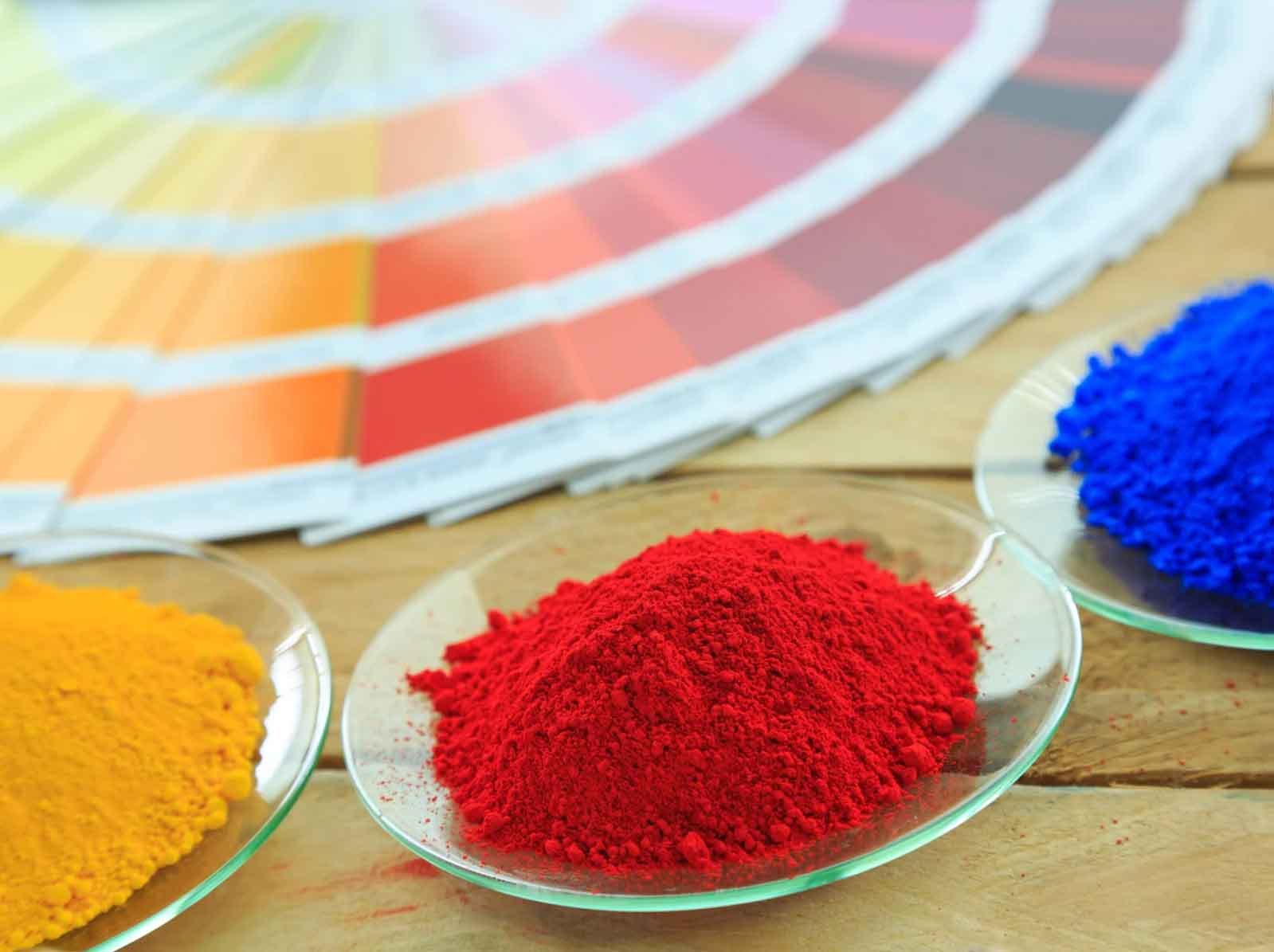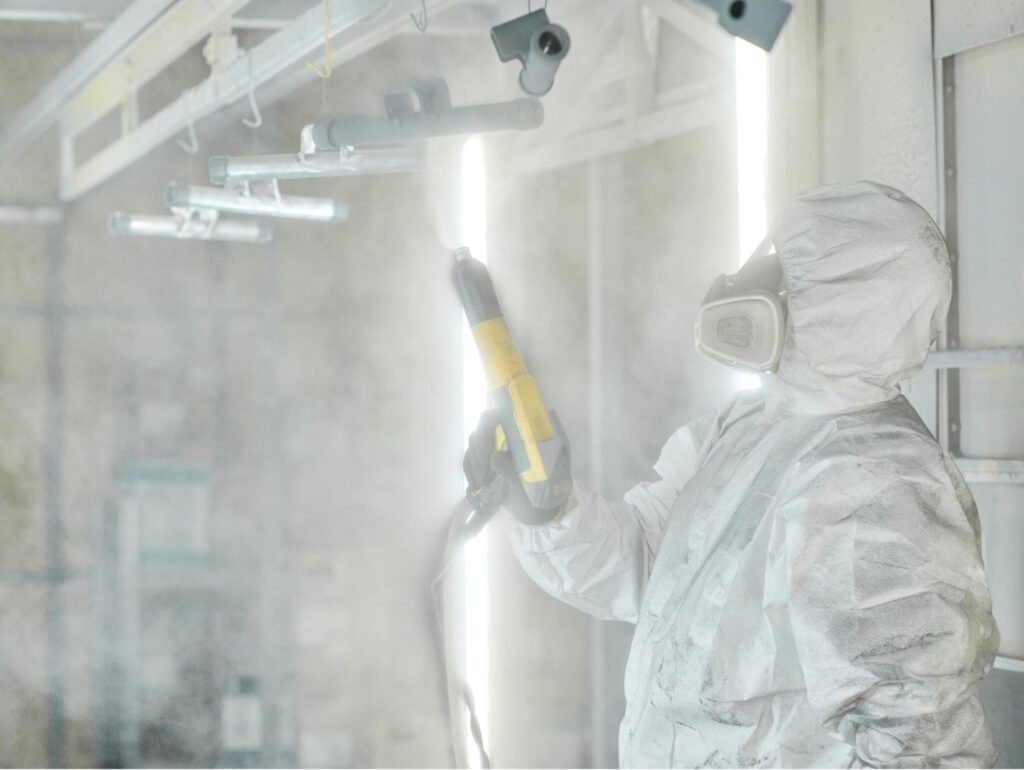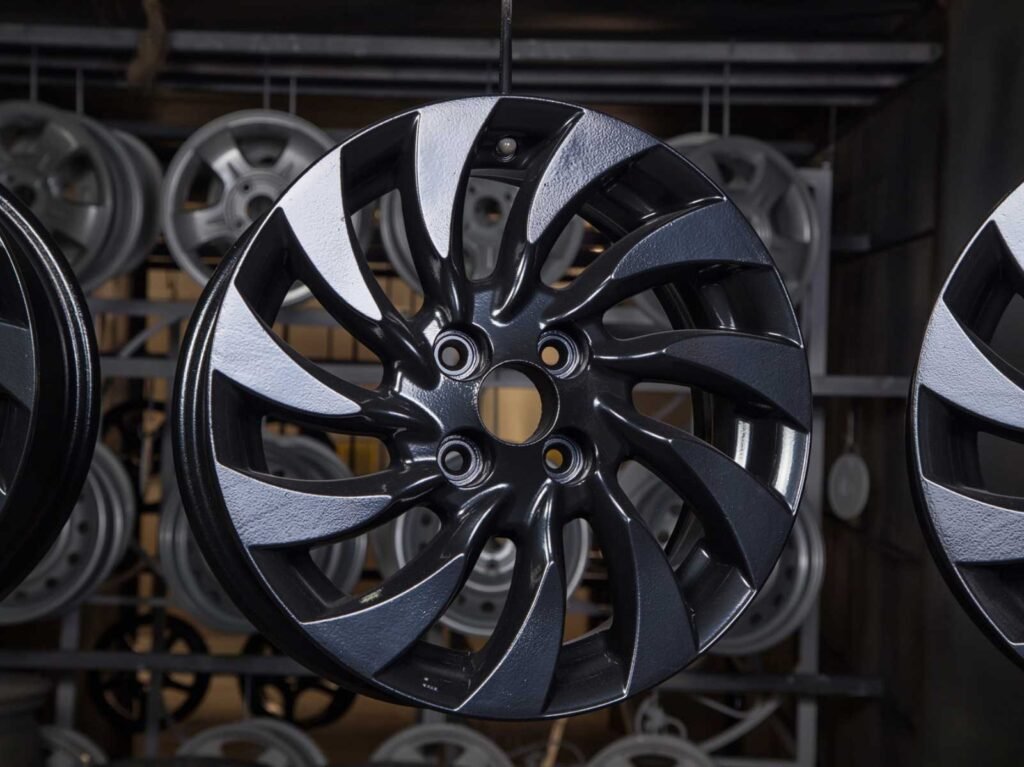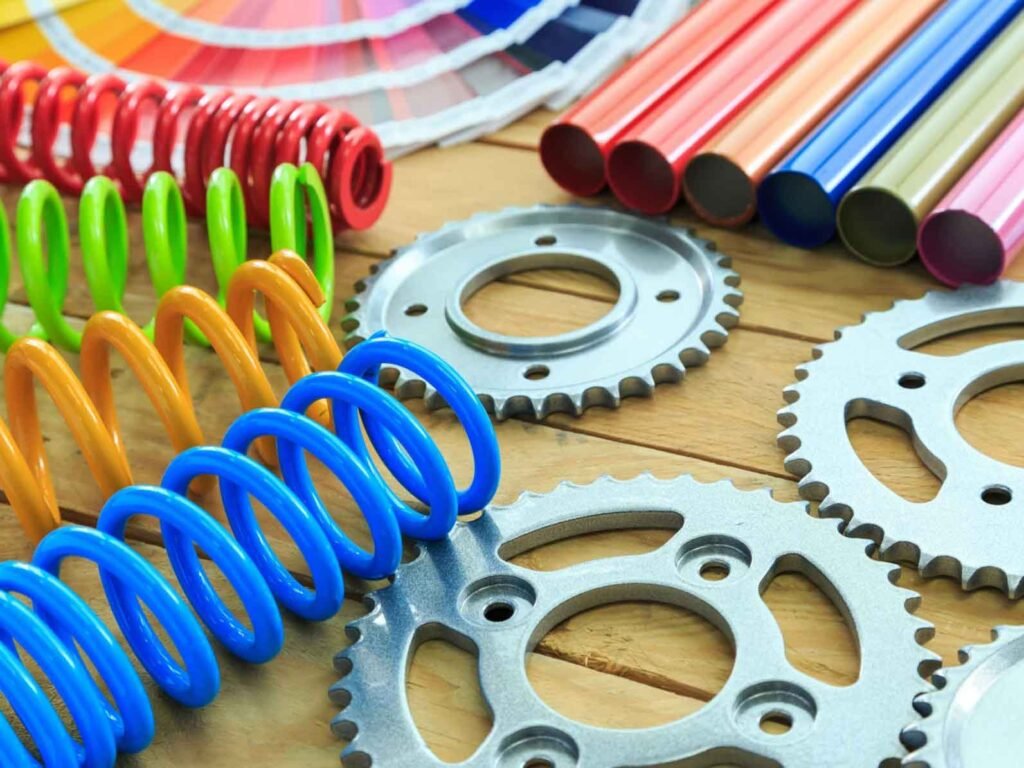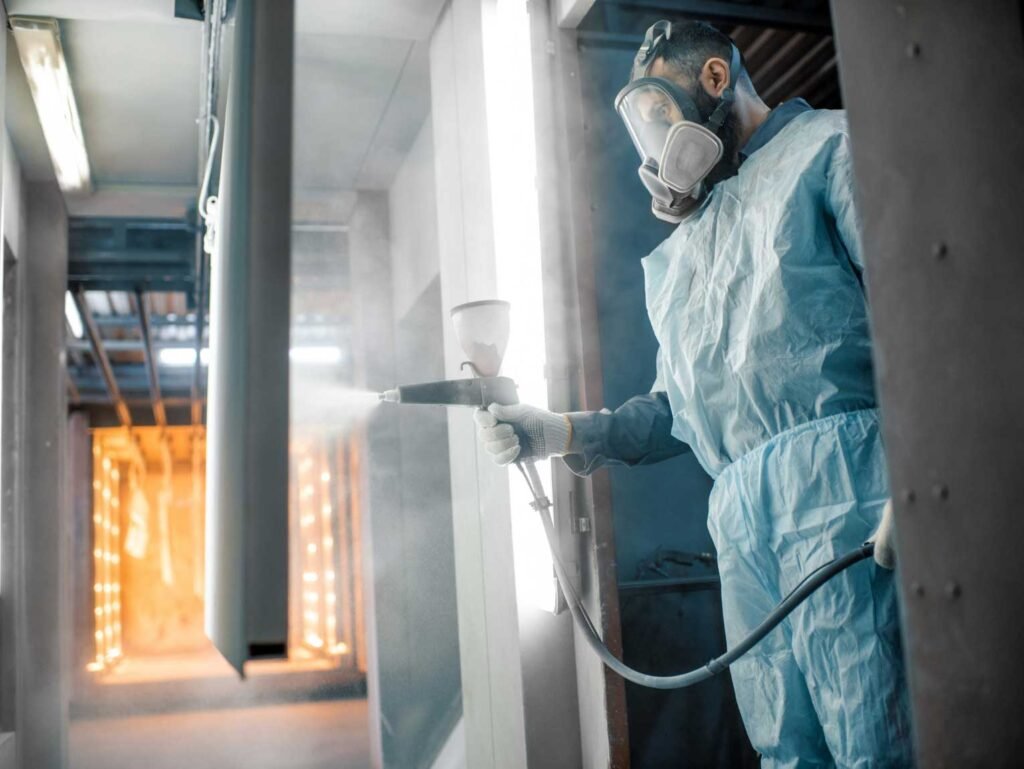Powder coating is a popular method used in finishing a variety of products, providing durability, corrosion resistance, and an attractive appearance. The two main categories of powders used in powder coating are thermoset and thermoplastic powders. Both types offer unique properties, advantages, and applications, making them suitable for different industries. In this article, we’ll explore these two categories, their subtypes, advantages and disadvantages, and future trends in the powder coating industry.
What are Thermoset and Thermoplastic Powder Coatings?
Thermoset Powder Coatings
Thermoset powders are designed to undergo a chemical reaction during the curing process, resulting in a hard, durable finish that cannot be melted or reshaped once set. They are widely used because of their excellent adhesion, chemical resistance, and ability to withstand high temperatures.
Advantages:
- Highly durable and resistant to scratching, chipping, and corrosion
- Excellent adhesion and chemical resistance
- Stable at high temperatures, making them suitable for harsh environments
Disadvantages:
- Once cured, they cannot be melted or reformed
- Not suitable for applications requiring flexibility
Thermoplastic Powder Coatings
Thermoplastic powders do not undergo a chemical change during curing. Instead, they melt when heated and harden upon cooling. This allows them to be melted and reshaped multiple times, making them ideal for applications requiring flexibility or recyclability.
Advantages:
- Highly flexible and can be melted and reformed multiple times
- Provide excellent impact resistance and adhesion
- Suitable for thicker coatings
Disadvantages:
- Less resistant to high temperatures compared to thermoset powders
- Generally not as hard or durable as thermoset coatings
Thermoset Powder Coatings
1. Epoxy Powder Coatings
Epoxy powder coatings are known for their excellent adhesion, chemical resistance, and hardness. They provide superior corrosion resistance, making them ideal for indoor applications such as appliances, pipes, and electrical components.
- Pros: Outstanding chemical resistance, hardness, and adhesion
- Cons: Poor UV resistance, making them unsuitable for outdoor use
2. Epoxy-Polyester (Hybrid) Powder Coatings
Epoxy-polyester hybrid coatings combine the best properties of both epoxy and polyester powders. They offer better UV resistance than pure epoxy coatings, making them more versatile.
- Pros: Improved UV resistance, cost-effective
- Cons: Not as durable as pure epoxy or polyester coatings for outdoor applications
3. Polyester Powder Coatings
Polyester powder coatings are highly resistant to weathering, UV light, and chemicals. They are widely used in outdoor applications, such as automotive parts, outdoor furniture, and architectural components.
- Pros: Excellent UV resistance, weather durability
- Cons: Not as chemically resistant as epoxy coatings
4. Acrylic Powder Coatings
Acrylic powder coatings provide a smooth, high-gloss finish with good weathering resistance. They are often used for automotive clear coats, outdoor furniture, and appliances.
- Pros: High gloss, good weather resistance
- Cons: Limited chemical resistance and durability compared to other types
5. Fluoropolymer Powder Coatings
Fluoropolymer coatings, such as PVDF (polyvinylidene fluoride), offer exceptional weatherability, UV resistance, and corrosion resistance. They can function as either thermoset or thermoplastic coatings.
- Pros: Outstanding weather resistance, UV stability
- Cons: Higher cost, more complex application process
6. UV-Curable Powder Coatings
UV-curable powders are cured using ultraviolet light, allowing for faster curing times and lower energy consumption. They are increasingly popular for heat-sensitive substrates like MDF (medium-density fiberboard).
- Pros: Quick curing, energy-efficient
- Cons: Requires specialized equipment for UV curing
7. Specialty Powder Coatings
These include coatings with unique properties like anti-graffiti, anti-microbial, textured finishes, and metallic effects. Specialty powder coatings cater to niche applications requiring specific performance characteristics.
Thermoplastic Powder Coatings
1. Polyethylene Powder Coatings
Polyethylene coatings offer excellent chemical resistance and flexibility. They are used for coating metal pipes, wire mesh, and playground equipment.
- Pros: High flexibility and impact resistance
- Cons: Lower temperature resistance compared to other thermoplastic powders
2. Polyvinyl Chloride (PVC) Powder Coatings
PVC powder coatings are known for their flexibility, toughness, and chemical resistance. They are commonly used in coatings for dishwasher racks, tool handles, and automotive parts.
- Pros: Excellent chemical resistance, flexibility
- Cons: Not suitable for high-temperature applications
3. Polyamide (Nylon) Powder Coatings
Nylon powder coatings provide superior abrasion resistance, impact strength, and chemical resistance. They are used for applications requiring high durability, such as conveyor belts, gears, and industrial components.
- Pros: Exceptional abrasion resistance, chemical resistance
- Cons: More expensive than other thermoplastic options
4. Polyphenylene Sulfide (PPS) Powder Coatings
PPS coatings offer excellent thermal stability, chemical resistance, and electrical insulation properties. They are commonly used in applications like automotive parts, electronics, and chemical processing equipment.
- Pros: High-temperature resistance, chemical resistance
- Cons: Higher cost and more challenging application process
5. Other Thermoplastic Powder Coatings
These include fluoropolymer (PVDF) coatings, which provide exceptional weatherability, and polyurethane coatings, known for their toughness and flexibility. They cater to various specialized applications in the powder coating industry.
Conclusion
Both thermoset and thermoplastic powder coatings play crucial roles in various industries, each offering distinct advantages and applications. While thermoset powders are preferred for their durability, hardness, and resistance to high temperatures, thermoplastic powders excel in flexibility, impact resistance, and reusability.
If you’re looking to optimize your powder coating process or explore the best powder options for your application, feel free to reach out to us. We’re here to help you navigate the world of powder coating solutions!

